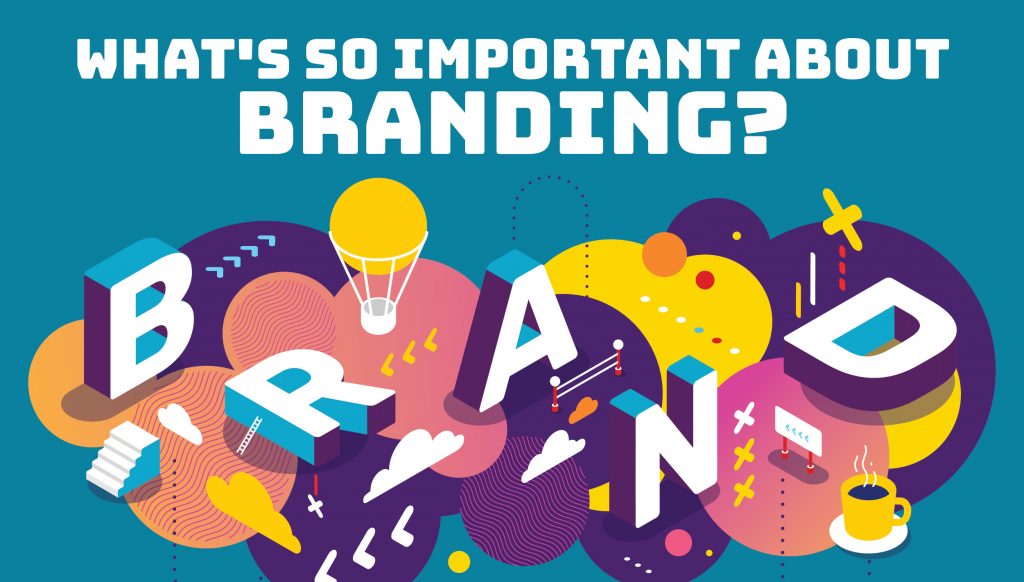
What’s So Important About Branding?
Imagine Batman without the bat get-up. It would be less convincing and a lot less cool if it was just Bruce Wayne in regular attire with a budget vehicle, fighting Gotham’s crime. Sure, you could argue that even without the classic Batman image, Bruce could still accomplish his crime-fighting and maybe even be relatable to the general population. But, what is Batman without his costume? What is he without his Batmobile? There’s no image, no message, no personality, and no recognizable light in the sky. There’s no support to demonstrate what he offers or that he even exists.
In fact, without something like his Batmobile, suddenly he loses a core piece of not just image, but his capabilities.
Suddenly, no one cares.
Not very impressive, right? Without branding in place, a product becomes one-dimensional and lackluster. Easily forgettable.

A brand is not just the face of a product. It’s the spokesperson, the teacher, and the symbol of a company’s assets. It’s the story. Experts talk about brand as if it were a separate entity from the business. In a way, they’re right.
In “Brands and Branding: Research Findings and Future Priorities,” Keller and Lehmann (2006) suggest, “through advertising, usage experience, and other activities and influences, [a brand] can develop a series of attachments and associations that exist over and beyond the objective product.”
Your brand should stand alone in the minds of consumers. It should become the feeling consumers have when your product or service enters into their consciousness. It’s a guiding light and an end destination all in one.
We can talk about what brand is or should be, but that doesn’t get us to the point. Brands mean something to people, but why? Is it really because they think of a brand as another person they can relate to? Brands certainly try to anticipate consumer needs and desires before they think of it themselves. Thus, in this truth lies the answer.
Branding makes it easy. As bombarded as we all are with news, life events, and everyday decisions, we try to conserve our limited brainpower whenever we can.
Iyengar and Lepper (2000) conducted a study to show that too many options reduce satisfaction with our choice. Participants were required to select either one of 6 or 24 chocolates; the researchers then had participants write an essay. The ground-breaking results demonstrated that people were more satisfied with their choice if they had fewer options. Plus, they wrote better essays.

Think about choosing from a hundred different kinds of toothpaste versus a short, personal list of brands and then doing so for every single product you have to buy at the store. If all of our choices were simplified for us, we’d have more time and energy to put our efforts towards more important tasks. This is why brands are transformative.
In Building A Story Brand, Donald Miller illustrates that the number one failure companies make with their brands is overcomplicating their message. A consumer shouldn’t work to determine what it is you’re selling, why it would benefit them, and how to purchase it. You’ll almost certainly lose potential sales that way.
Miller calls “the grunt test,” a consumer’s ability to look at the advertising or website and immediately understand the brand’s position (pg. 24). Creating a focused position within a category helps organize these identifiers and distinguish a brand from a competitor. However, if consumers struggle to identify your offerings, you lose share of mind.

An excellent example of strong branding is found in Coca-Cola. This evergreen focus on their branding allows them to consistently have their product front of mind, meaning not only is the choice of soda immediately recognizable and easy, but many people also associate Coke with familiarity and personal memories.
When you hear Coke, you don’t think “high sugar content soda water that used to be made with questionable ingredients.” You think nearly precisely what their brand emulates: their resolute status as one of the most established brands in the country with a consistent wave of joyful yet powerful experiences, delivered through brilliant advertising.
A well-developed brand organizes the information about your product, service, company, ideals, and more. Only once credibility is established for your brand can consumers start to align themselves with the personality and the experience purchasing your product/service offers.
Brands determine whether your marketing efforts will be in sync and worthwhile. With all the possible interactions consumers can have with brands, including company perceptions, purchasing moments, personalization, and cultural events, branding requires precision, thoughtfulness, and consistency. The stronger your brand strategy is, the more stable your consumer relationships will be.
– Christopher Nolan’s Batman Begins

